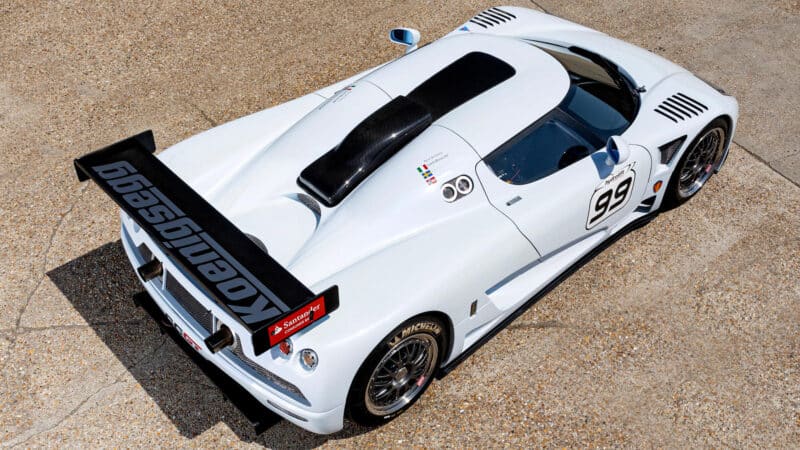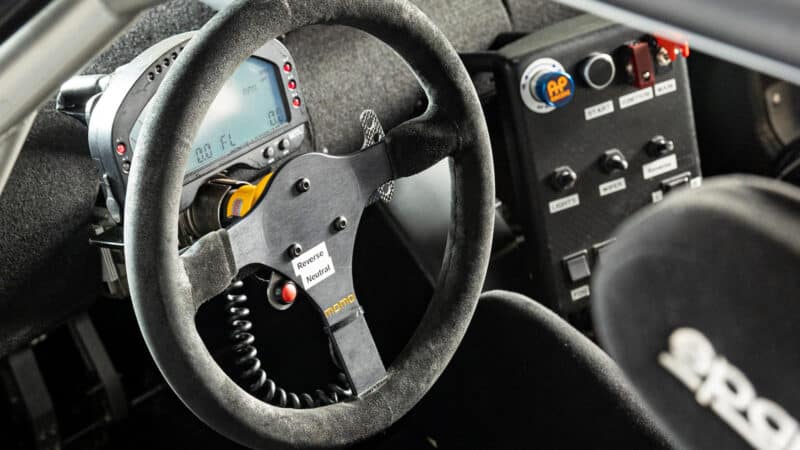Le Mans was seen as a perfect opportunity to demonstrate the ability of Koenigsegg whilst acting as a call to the automotive industry that the company was ready to take on the major players, both on and off the track.
GT1 regulations of the time stated that a car was not to exceed two metres in width and that the cockpit must be at least 70% of the width of the car. The original Koenigsegg CC platform was designed with this in mind, paving the way for the CCGT’s development by a specialist team of engineers.
After several years of development, this factory “side project” began testing in 2008; a lightweight monster that weighed just 1000 kg dry, 100 kilos less than the GT1’s minimum weight thanks to the CCGT’s carbon fibre monocoque. It would have allowed the team to use ballast to achieve optimum weight balance.
Paired with the fact the car could produce over 600 kg of downforce and could produce a very competitive 600 bhp, the CCGT was set to make waves at Le Mans.

5-litre V8 engine produces more than 600bhp
That was until officials revised the GT1 regulations that year, hitting the CCGT with a double blow that would prove fatal to its Le Mans ambitions. Carbon fibre monocoques were banned and manufacturers were ordered to produce 350 homologated versions a year instead of 20, an increase that was unobtainable for Koenigsegg, considering that to this day it has produced fewer than 500 cars.






